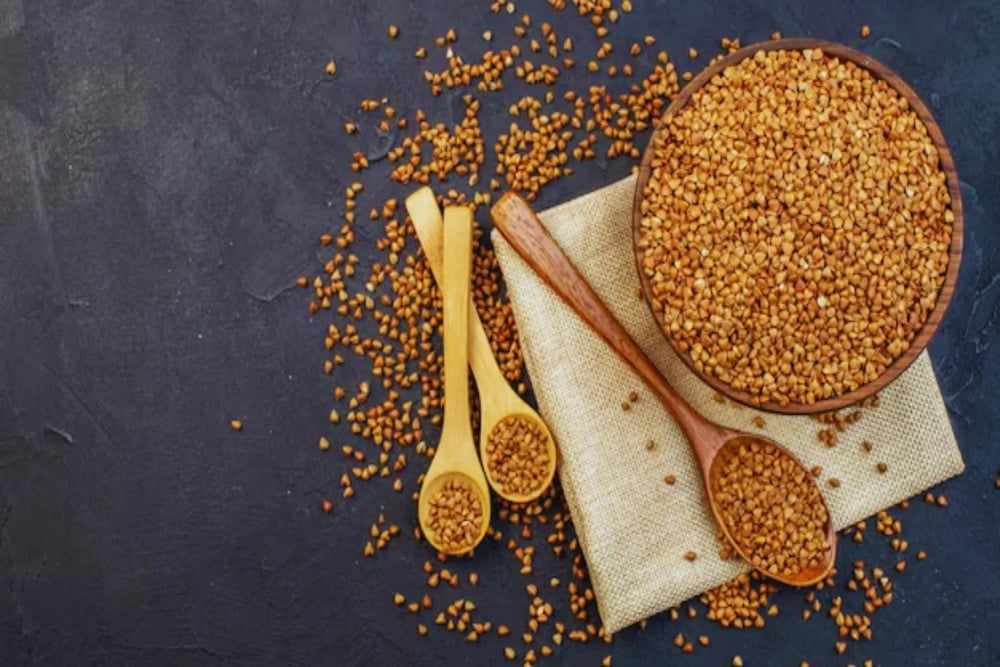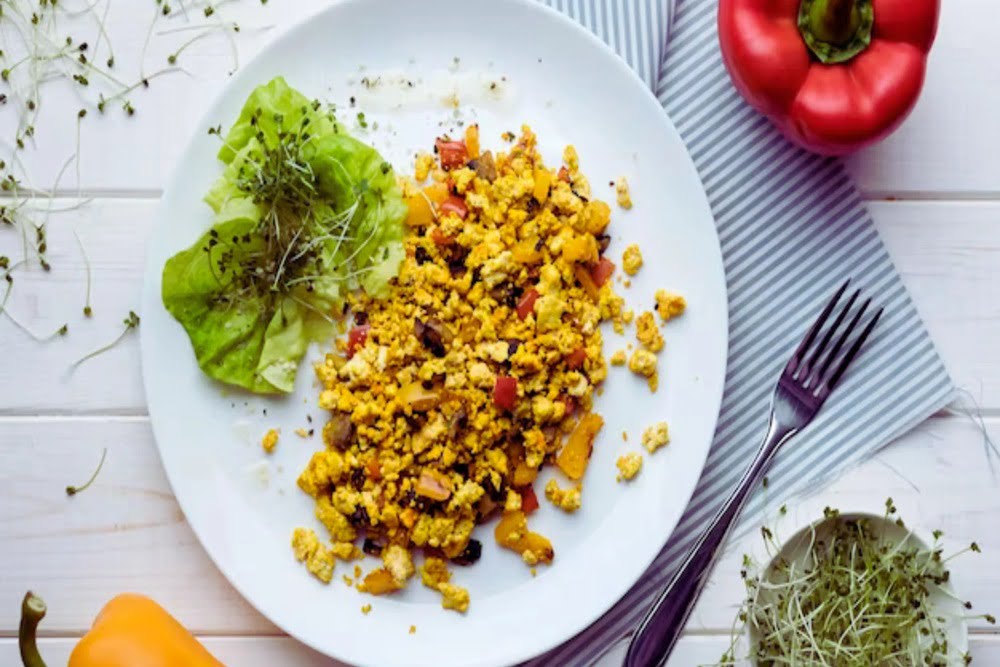
In a world where modern wellness trends come and go, there’s something enduring about the wisdom of the ancients. One such gem that has been making a resurgence in recent years is millet. Millet, often referred to as the “forgotten grain,” has a rich history dating back thousands of years and boasts a myriad of health benefits. If you’re looking to improve your well-being and embrace a more holistic approach to nutrition, it’s time to explore the world of millet. In this article, we’ll delve into the ancient wisdom behind millet and how you can get started on your journey to better health.
Millet: An Ancient Superfood

Unveiling the Forgotten Grain
Millet, often overlooked in favor of more common grains like rice and wheat, is a true superfood. This small, round grain packs a powerful nutritional punch. It’s gluten-free, making it an excellent option for those with sensitivities, and it’s loaded with essential vitamins and minerals.
Historical Significance
Millet’s history traces back to ancient civilizations like China and India. It was a staple crop, revered for its resilience and ability to thrive in harsh conditions. The wisdom of our ancestors recognized its value, and today, we’re rediscovering it.
Nutritional Powerhouse
Millet is rich in nutrients like magnesium, phosphorus, and antioxidants. It’s a great source of fiber and provides slow-release energy, making it an ideal addition to your diet.
Millet Nutrition Facts
When it comes to nutritional content, millet punches above its weight. Packed with essential macronutrients and micronutrients, millet offers a well-rounded nutritional profile. This ancient grain is a good source of plant-based protein, providing a considerable amount of amino acids necessary for building and repairing tissues. It is also rich in dietary fiber, aiding in digestion and promoting a healthy gut. In addition, millet contains an array of vitamins and minerals, including iron, magnesium, and phosphorus, contributing to optimal bodily functions.
The Health Benefits of Millet

Millet’s Role in Weight Management
Are you looking to shed those extra pounds? Millet might just be the secret ingredient you’ve been searching for. With its high fiber content, millet helps keep you feeling full for longer periods, reducing the urge to snack mindlessly. Additionally, millet has a lower calorie count compared to other grains, making it a weight-loss-friendly option.
Millet’s Impact on Heart Health
Keeping your heart healthy is crucial for overall well-being, and millet can be an ally in this quest. Packed with nutrients like magnesium and potassium, millet aids in managing blood pressure levels and reducing the risk of cardiovascular diseases. The fiber in millet supports healthy cholesterol levels, further enhancing heart health.
Millet as a Gluten-Free Alternative
For individuals with gluten intolerance or celiac disease, millet serves as an excellent alternative to wheat and other gluten-containing grains. It allows you to enjoy a wide range of dishes without compromising on taste or nutrition. By incorporating millet into your diet, you can savor the goodness of grains without the discomfort.
Millet’s Contribution to Digestive Health
A happy gut equals a happy you, and millet plays a crucial role in maintaining digestive health. The fiber content in millet aids in preventing constipation, promoting regular bowel movements, and supporting a healthy digestive system. Moreover, millet is gentle on the stomach, making it suitable for those with sensitive digestive systems.
How to Incorporate Millet in Your Diet

Now that you’re aware of the myriad of benefits millet has to offer, let’s discuss how you can incorporate this ancient grain into your daily diet. The possibilities are endless, and Millet’s versatility shines through in various culinary creations.
Ideas for Cooking with Millet
Millet can be prepared in numerous ways to suit your taste buds. From creamy porridges to fluffy pilafs, millet adapts beautifully to different cooking methods. You can use it as a base for salads, mix it into soups, or transform it into delectable patties. The options are limited only by your imagination.
Millet Recipes for Breakfast, Lunch, and Dinner
Start your day with a nutritious millet breakfast bowl topped with fresh fruits and nuts. For a satisfying lunch, whip up a refreshing salad with millet, leafy greens, and a zesty dressing. If dinner calls for something hearty, try a nourishing millet risotto or a flavorful stir-fry. The subtle nutty flavor of millet will elevate your meals to new heights.
Millet as a Substitute in Various Dishes
Do you love incorporating grains into your favorite dishes? Millet can be used as a substitute for rice, quinoa, or couscous in many recipes. Whether you’re making a comforting pilaf, a vibrant grain bowl, or even stuffing for vegetables, millet brings its unique touch to every dish.
Millet for Different Dietary Needs
Millet for Vegans and Vegetarians
For those following a plant-based diet, millet provides a valuable source of protein and other essential nutrients. It can be a great substitute for animal-based protein sources, adding variety and diversity to vegetarian and vegan meals.
Millet as a Gluten-Free Option
Individuals with gluten sensitivity or those diagnosed with celiac disease can rely on millet as a safe and delicious alternative to wheat-based products. Its gluten-free nature makes it suitable for those seeking to eliminate gluten from their diet.
Millet for Athletes and Fitness Enthusiasts
With its complex carbohydrates, moderate protein content, and abundance of vitamins and minerals, millet can fuel active individuals and aid in post-workout recovery. Its nutritional composition ensures sustained energy release, helping athletes perform at their best.
Millet and Weight Management

Millet: A Low-Calorie, High-Fiber Grain
One of the key reasons why millet is beneficial for weight management is its low-calorie nature. Compared to other grains, millet is relatively low in calories, making it an excellent choice for those looking to reduce calorie intake while still enjoying a filling meal.
Slow Digestion and Stable Blood Sugar Levels
The complex carbohydrates present in millet are digested slowly by the body, leading to sustained release of energy. When you consume millet, your blood sugar levels remain steady, avoiding sudden spikes or crashes that can trigger cravings and overeating.
Nutrient Density for Optimal Nourishment
Millet’s weight management benefits extend beyond its calorie and fiber content. This ancient grain is packed with essential nutrients that contribute to overall health while keeping you satisfied.
Millet is a good source of plant-based protein, which is essential for maintaining muscle mass during weight loss. Protein not only provides satiety but also supports the body’s muscle repair and growth processes. By including millet in your diet, you ensure an adequate protein intake that aids in preserving lean muscle mass.
Millet for the Whole Family

Nutrient Diversity: Millet is a nutritional powerhouse that offers a diverse range of essential nutrients, including protein, fiber, vitamins, and minerals. It provides a well-rounded nutritional profile suitable for individuals of all ages, from growing children to active adults and seniors.
Gluten-Free and Digestibility: Being naturally gluten-free, millet is a safe option for individuals with gluten sensitivities or celiac disease. Its gentle on the digestive system, making it a suitable choice for those with digestive concerns or dietary restrictions.
Versatility in Cooking: Millet’s mild flavor and adaptable texture make it a versatile ingredient that can be incorporated into a variety of dishes. From savory pilafs and soups to sweet porridges and baked goods, millet offers endless possibilities to satisfy diverse palates within the family.
Health Benefits for All: With its potential to support weight management, heart health, digestion, and skin wellness, millet caters to a wide range of health goals and concerns. Whether you’re looking to boost immunity, enhance energy levels, or promote overall well-being, millet has something to offer to every member of the family.
Millet and Skin Health

Promotes Collagen Production
The combination of vitamin E, B vitamins, and zinc in millet stimulates collagen synthesis in the skin. Collagen is essential for maintaining skin elasticity, firmness, and overall youthfulness. By incorporating millet into your diet, you support collagen production, leading to supple and resilient skin.
Protects Against Premature Aging
The antioxidant properties of millet, particularly the presence of vitamin E, safeguard the skin from environmental stressors and UV damage. By neutralizing free radicals, millet helps prevent premature signs of aging such as wrinkles, fine lines, and age spots, allowing your skin to maintain its youthful appearance.
Improves Skin Texture and Clarity
The magnesium content in millet contributes to improved skin texture and clarity. Magnesium helps regulate sebum production, reducing excess oiliness and preventing acne breakouts. By including millet in your diet, you promote a clear and smooth complexion.
Enhances Skin Hydration
B vitamins found in millet support skin hydration by improving moisture retention and barrier function. Nourishing your skin from within with these essential vitamins results in a plump and hydrated complexion, diminishing the appearance of dryness and dullness.
Conclusion
Incorporating ancient grains like millet into our modern lifestyles offers a wealth of benefits for our overall well-being. Whether you’re looking to enhance your diet, manage weight, support heart health, or improve digestion, millet has got you covered. By exploring versatile cooking methods and enjoying the delightful flavors millet offers, you can truly appreciate the wisdom of the past. So, why wait? Embrace Millet’s nourishing power and experience firsthand the wonders it can bring to your wellness journey.
FAQ
1: Is millet suitable for individuals with celiac disease?
Yes, millet is gluten-free, making it a safe and nutritious option for individuals with celiac disease.
2: Can millet help with weight loss?
Due to its high fiber content and slow digestion, millet can aid in weight loss by promoting feelings of fullness and reducing calorie intake.
3: Does millet contain any allergens?
Millet is not a common allergen, and allergic reactions are rare. However, if you have known allergies or sensitivities, it’s recommended to consult with a healthcare professional before incorporating millet into your diet.
4: How does millet compare to other grains in terms of nutritional value?
Millet is comparable to other grains in terms of overall nutritional value. However, its higher protein content and beneficial fiber make it a standout choice.
5: Can millet be given to infants and young children?
Yes, millet can be introduced into a child’s diet after six months of age. Start by preparing it in soft and easily digestible forms, such as porridge or puree, before progressing to more textured dishes as the child grows.



 Afrikaans
Afrikaans Albanian
Albanian Amharic
Amharic Arabic
Arabic Armenian
Armenian Azerbaijani
Azerbaijani Basque
Basque Belarusian
Belarusian Bengali
Bengali Bosnian
Bosnian Bulgarian
Bulgarian Catalan
Catalan Cebuano
Cebuano Chichewa
Chichewa Chinese (Simplified)
Chinese (Simplified) Chinese (Traditional)
Chinese (Traditional) Corsican
Corsican Croatian
Croatian Czech
Czech Danish
Danish Dutch
Dutch English
English Esperanto
Esperanto Estonian
Estonian Filipino
Filipino Finnish
Finnish French
French Frisian
Frisian Galician
Galician Georgian
Georgian German
German Greek
Greek Gujarati
Gujarati Haitian Creole
Haitian Creole Hausa
Hausa Hawaiian
Hawaiian Hebrew
Hebrew Hindi
Hindi Hmong
Hmong Hungarian
Hungarian Icelandic
Icelandic Igbo
Igbo Indonesian
Indonesian Irish
Irish Italian
Italian Japanese
Japanese Javanese
Javanese Kannada
Kannada Kazakh
Kazakh Khmer
Khmer Korean
Korean Kurdish (Kurmanji)
Kurdish (Kurmanji) Kyrgyz
Kyrgyz Lao
Lao Latin
Latin Latvian
Latvian Lithuanian
Lithuanian Luxembourgish
Luxembourgish Macedonian
Macedonian Malagasy
Malagasy Malay
Malay Malayalam
Malayalam Maltese
Maltese Maori
Maori Marathi
Marathi Mongolian
Mongolian Myanmar (Burmese)
Myanmar (Burmese) Nepali
Nepali Norwegian
Norwegian Pashto
Pashto Persian
Persian Polish
Polish Portuguese
Portuguese Punjabi
Punjabi Romanian
Romanian Russian
Russian Samoan
Samoan Scottish Gaelic
Scottish Gaelic Serbian
Serbian Sesotho
Sesotho Shona
Shona Sindhi
Sindhi Sinhala
Sinhala Slovak
Slovak Slovenian
Slovenian Somali
Somali Spanish
Spanish Sundanese
Sundanese Swahili
Swahili Swedish
Swedish Tajik
Tajik Tamil
Tamil Telugu
Telugu Thai
Thai Turkish
Turkish Ukrainian
Ukrainian Urdu
Urdu Uzbek
Uzbek Vietnamese
Vietnamese Welsh
Welsh Xhosa
Xhosa Yiddish
Yiddish Yoruba
Yoruba Zulu
Zulu